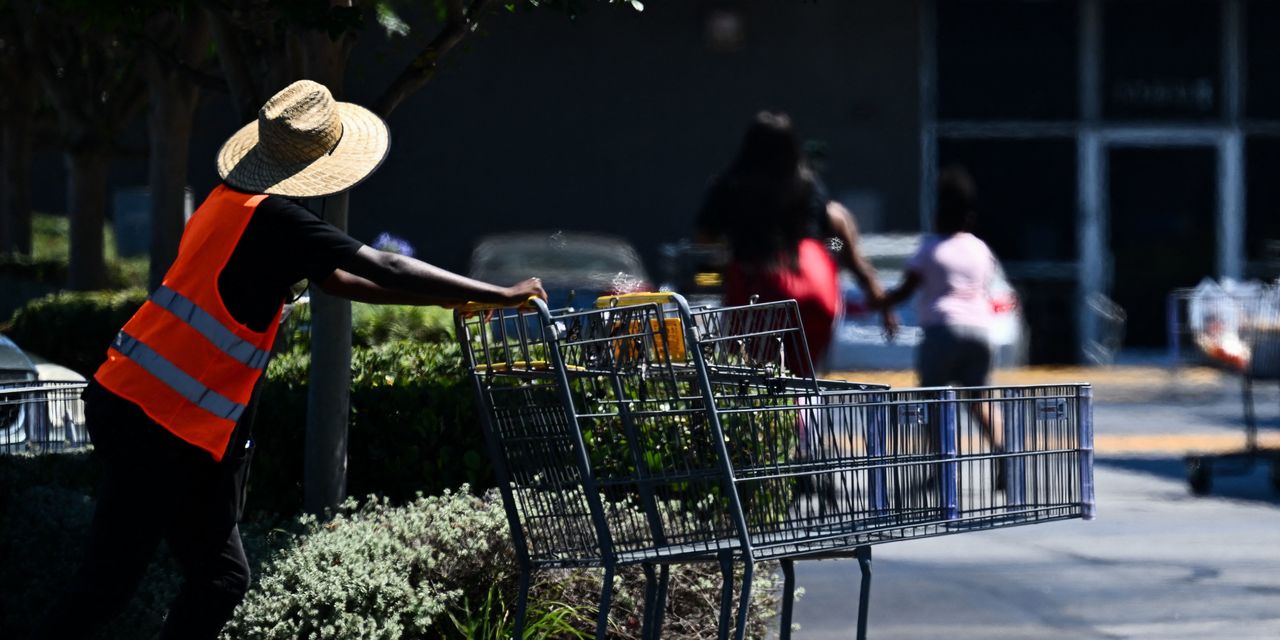What goes up does not have to come down — especially when it comes to the price of goods at the grocery store.
Even as the rate of inflation cooled from its four-decade peak, experts say shoppers should not be counting on many grocery-store price reductions.
“Brands really discovered as a result of the pandemic and inflation that they could raise prices — and really not affect their sales whatsoever,” said Phil Lempert, editor of Supermarketguru.com, a website focused on the grocery industry. “They are able to, in my opinion, unjustifiably, raise prices,” he added.
“History suggests that [the price of] these processed foods, once they move up, they don’t really move down much,” Jason English, lead equity analyst for packaged food, household and personal care sectors at Goldman Sachs
GS,
said in a panel Wednesday on the state of the consumer.
The backdrop is an economy where prices are still increasing — just not at the whipsaw pace they were a year ago.
The cost of living rose a lower-than-expected 0.2% month over month in June, the Bureau of Labor Statistics said Wednesday. Prices rose 3% on an annual basis, which is the lowest rate since March 2021.
The cost for groceries didn’t increase from May to June, but they were 4.7% higher compared to a year ago, the Bureau of Labor Statistics said. For context, when inflation rates hit a 41-year high last June, the cost of groceries, the category known as “food at home,” soared more than 12% from a year earlier.
Read also: See how much inflation has raised your cost of living, using MarketWatch’s guide
Still, there are certain foods and commodities that are cheaper now than they were a year ago.
The Bureau of Labor Statistics said the average cost for a dozen eggs in June was $2.21, which is around 50 cents cheaper than a year earlier. In January, the cost of eggs was $4.82, the agency said. The price spike is linked with an avian flu outbreak that forced producers to cull millions of chickens.
The cost of commodities and the cost of processed foods are two different things, Lempert said.
Commodities are perishable and supply can fluctuate with bumper crops or bad luck, Lempert noted. Processed foods are made in advance, and sit on shelves where price and supply are easier to manage, he said.
But food prices stick. “The grocery store remains a pressure point for consumer spending,” said Carman Allison, vice president of thought leadership, North America, at NIQ, a consumer intelligence and analytics firm.
Writing in a report released Wednesday, Allison said there are very few places inside a retailer like a grocery store where prices are not rising. The unit prices for an array of “dry grocery” items — like cereal, snacks and more — are up 11% on the year, and the cost of frozen-section items are up 7%, the report said.
“Americans are aware of price increases and have adjusted their shopping choices, accordingly, looking for ways to save and stretch their wallets,” Allison said. That helps explain why more people are turning to store brand and discount stores, the report said.
But Lempert said the emergence of store brand or private label products is one reason why many items in a grocery store are not getting cheaper.
“There’s a bit of a war going on” between food makers and their branded items, and grocery chains and retailers with their store brands. Branded food makers may not budge lower on price because they think they have shoppers who will buy their food instead of the private label, Lempert said.
But there might be some relief in pet food prices. “There’s real risk in pet food, where $1.5 billion of new capacity is coming online this year in the U.S., so with a lot more supply in the middle of the market, we expect a lot more promotional activity,” English said.
While some consumer advocates say corporations are unfairly running up prices to maintain profit margins, others maintain that consumers will have to take a stand.
“Until we have consumers basically saying, you know we’re not buying these products because of the prices, they are going to continue to do it,” English added.
Read the full article here








